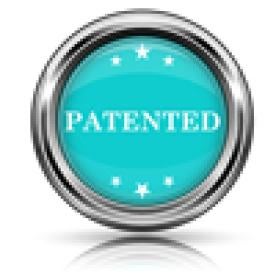The US Court of Appeals for the Federal Circuit upheld a district court’s infringement determination, finding that a patent owner could assert infringement under the doctrine of equivalents since it never specified any unique characteristics of an explicitly claimed adhesive that would not be present in the alleged equivalent adhesive. UCB, Inc. v. Watson Labs. Inc., Case No. 18-1397 (Fed. Cir. June 24, 2019) (Chen, J). The Court also affirmed the district court’s validity finding for one patent and invalidity finding for another patent.
UCB markets rotigotine, a drug that treats Parkinson’s Disease, as a transdermal patch under the brand name Neupro. UCB owns one patent claiming a rotigotine transdermal patch and another patent claiming a polymorph of rotigotine. UCB filed a lawsuit against Watson Laboratories and Actavis for infringement of both patents after each filed an abbreviated new drug application to market a generic transdermal version of rotigotine. At trial, the district court found that all of the asserted claims of the rotigotine transdermal patch patent were infringed and valid, and found that all of the asserted claims of the polymorph of rotigotine patent were invalid. Actavis appealed the district court’s infringement and validity findings, and UCB cross-appealed the district court’s invalidity finding of the polymorph of rotigotine patent.
The Federal Circuit affirmed the infringement finding for the rotigotine transdermal patch patent. The asserted claims of the rotigotine transdermal patch patent recite a self-adhesive matrix layer that is an “acrylate-based or silicone-based polymer adhesive.” The accused products contain a polyisobutylene adhesive. UCB argued that the polyisobutylene adhesive used in the accused products was equivalent to the claimed “acrylate-based or silicone-based polymer adhesive.” Actavis argued that because UCB elected claims directed to an “acrylate-based or silicone-based polymer adhesive” in response to a restriction requirement during prosecution, UCB was now prevented from asserting infringement under the doctrine of equivalents. The Court disagreed, finding that in electing certain claims, UCB did not surrender polyisobutylene as an equivalent and never specified or relied “on any unique characteristics of acrylate or silicone-based polymer adhesive systems that would not be present in a polyisobutylene-based system” and would, therefore, distinguish these adhesives. The Federal Circuit also did not find any clear error with the finding that polyisobutylene, silicates and acrylates all had some similarities and were the most commonly used pressure-sensitive adhesives in transdermal patches at the time of the patent was filed. Therefore, despite the fact that only “acrylate-based or silicone-based polymer adhesive” were explicitly claimed, the Court found that a skilled artisan would not recognize polyisobutylene as substantially different from silicates or acrylates, and instead would consider them to be interchangeable equivalents.
Addressing the validity finding of the rotigotine transdermal patch patent, the Federal Circuit agreed that prior art did not anticipate the asserted claims because the prior art did not disclose a free base form of rotigotine “in the absence of water,” as required by the independent claim. The Court also found that other prior art disclosing a transdermal silicone or polyacrylate-based adhesive and a non-water solvent, along with a study in rats treated transdermally with rotigotine, did not invalidate the patent because one could not have reasonably expected to combine the prior art given the sparse nature of the field at the time and because one skilled in the art would have “confronted a significant challenge” in combining the prior art.
Turning to the invalidity finding of the polymorph of rotigotine patent, the Federal Circuit agreed that the patent was invalid under 35 USC § 102(a). The Court found that UCB filed its patent after discovering a precipitate in patches that it was manufacturing and distributing. However, the patches containing the precipitate were distributed and used by at least one patient, thus qualifying as an invalidating use by others in the United States before the invention by the applicant.



 i
i


